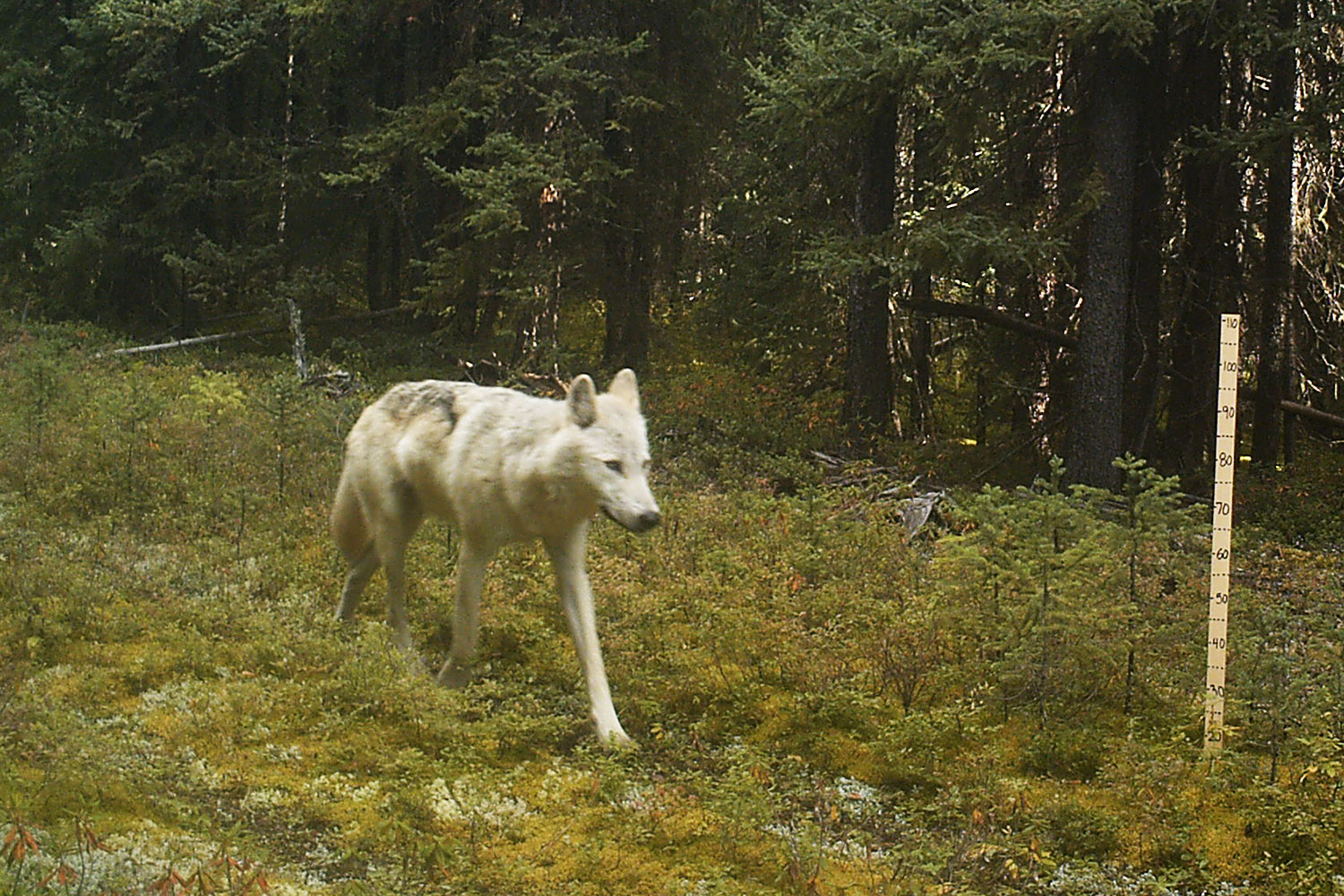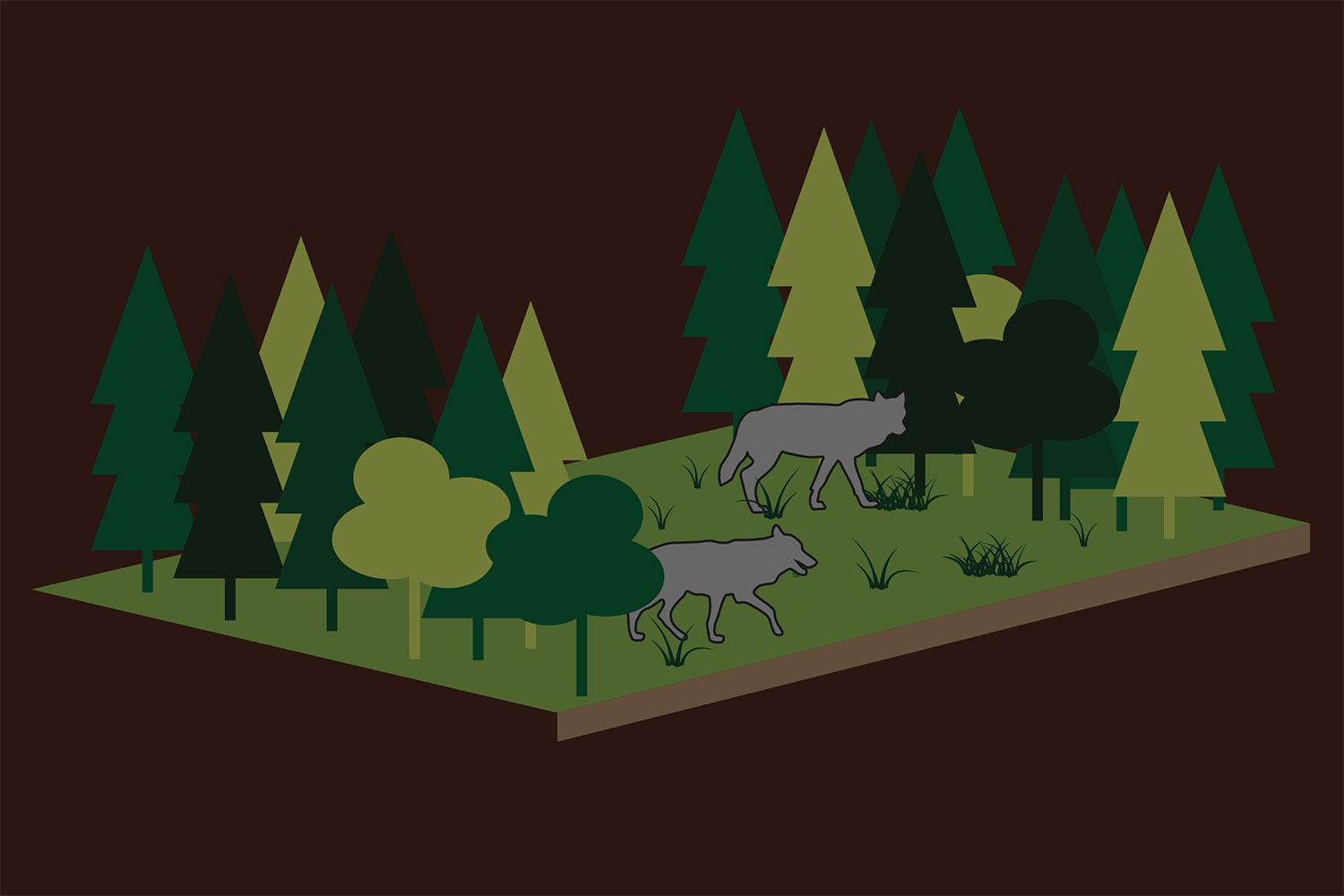
Abstract
Anthropogenic linear features facilitate access and travel efficiency for predators, and can influence predator distribution and encounter rates with prey. We used GPS collar data from eight wolf packs and characteristics of seismic lines to investigate whether ease-of-travel or access to areas presumed to be preferred by prey best explained seasonal selection patterns of wolves near seismic lines, and whether the density of anthropogenic features led to functional responses in habitat selection. At a broad scale, wolves showed evidence of habitat-driven functional responses by exhibiting greater selection for areas near low-vegetation height seismic lines in areas with low densities of anthropogenic features. We highlight the importance of considering landscape heterogeneity and habitat characteristics, and the functional response in habitat selection when investigating seasonal behaviour-based selection patterns. Our results support behaviour in line with search for primary prey during summer and fall, and ease-of-travel during spring, while patterns of selection during winter aligned best with ease-of-travel for the less-industrialized foothills landscape, and with search for primary prey in the more-industrialized boreal landscape. These results highlight that time-sensitive restoration actions on anthropogenic features can affect the probability of overlap between predators and threatened prey within different landscapes.
Read the full paper here.
Citation
Pigeon, K.E., MacNearney, D., Hebblewhite, M. et al. The density of anthropogenic features explains seasonal and behaviour-based functional responses in selection of linear features by a social predator. Sci Rep 10, 11437 (2020). https://doi.org/10.1038/s41598-020-68151-7








